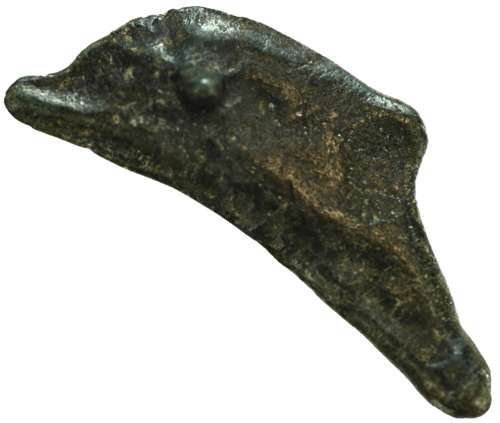





This small, uniquely shaped “dolphin” coin is one of the most fascinating transitional forms between a standardized coin and a bronze ingot. It weighs 4.23 g — which corresponds to the Athenian drachm weight standard widely used across various Mediterranean regions at the time.
Such dolphin-shaped money was struck in the city of Olbia — an ancient Greek colony on the Black Sea, at the mouth of the River Bug. Dolphins were extremely common in these waters and often accompanied sea-going ships over long distances, making them a natural symbol of maritime trade, good fortune, and safe travel.
The Sarmatian dolphin coins convey this symbolism in a particularly vivid way and became a distinctive hallmark of the entire region’s numismatic tradition.
Obverse: The obverse shows a stylized dolphin figure — cast to resemble the natural shape of a marine mammal. The convex, dynamic design conveys movement and freedom in the water. This is not traditional coin iconography but rather an archaic sculptural motif typical of early Greek colonial numismatics.
Reverse: On the reverse, the inscription APIXO marks the issuing authority (likely the city authority of Olbia). This inscription is the essential element that legally and symbolically defines the object as a monetary unit rather than a simple bronze ingot.
The surface is often uneven, with visible casting traces — typical for early-period bronze coinage.